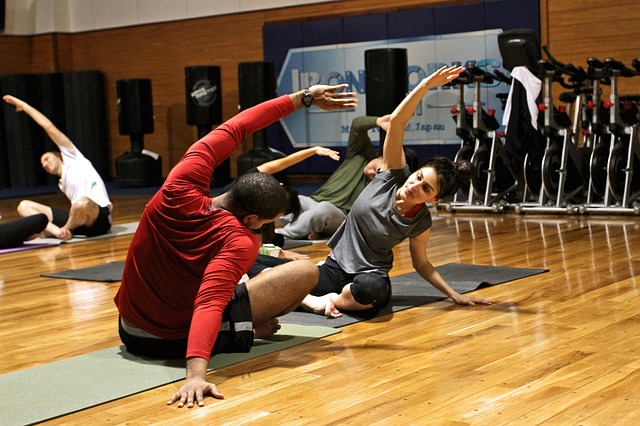
The main target in doing side bends is to burn fat. The majority of the fat burned is in the back, but it does target the abdominal muscles as well. Side bends, especially if you add weights into the exercise, can provide a great exercise for the muscles that are in your core support system.
Benefits
The muscles that are worked by side bend exercises are the erector spinae, obliques, rectus, quadratus and the lumborum.
The erector spinae is the term used to describe a set of eight muscles that overlap and surround the spine. They form two columns on either side of your spine and they run the length from your skull to your pelvis.
Your obliques wrap around your mid-section similar to a corset. There are three oblique muscles – the external, the internal and the transverse.
The rectus, or rectus abdominus is the muscle that is located in the front of your abdomen, commonly referred to as your abs. Your abs, when fully defined, are separated down the middle by a strip of connective tissue. This is what allows you to use one side of your abs at a time and you do not have to initiate action in both to cause movement.
The quadratus lumborum is a muscle that runs from your pelvis to your lumbar spine. You have one on either side of your body. When worked together and equally, these muscles keep your spine stable and aligned.
How to Warm-up
In order to warm up for side bends, you need to properly stretch your legs, back and abs. The stretching portion of your warm-up should last no less than 15 minutes. Afterward, you should follow up with a 10 to 15 minute power walk or light jog.
The Proper Form
• Stand with your feet two to three feet apart. Bring your arms to shoulder height, horizontal to the body and even with the shoulders.
• Exhale and bring your right arm over your head, bending at the waist.
• Aim through your comfort zone and toward the floor.
• Let your left hand hang down at your side as far as it will go.
• Inhale as you return to the original position. Repeat the same action to the left.
Continue this exercise for between one to three minutes, depending on your fitness level.
You can add difficulty to the exercise by adding three to five pounds weights. It is not recommended to add more than five pounds of weight to your side bend routine because it can cause too much strain on the stabilizing muscles of your torso and can cause pressure to your sciatic nerve.
How to Cool Down
Cooling down from this exercise is fairly easy. Lightly stretch the muscles that are used to complete the exercise and carry on with your exercise routine. This exercise is not a standalone exercise, but it can be used as a great warm up exercise in preparation for a more rigorous workout.






